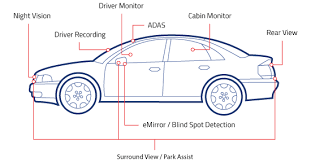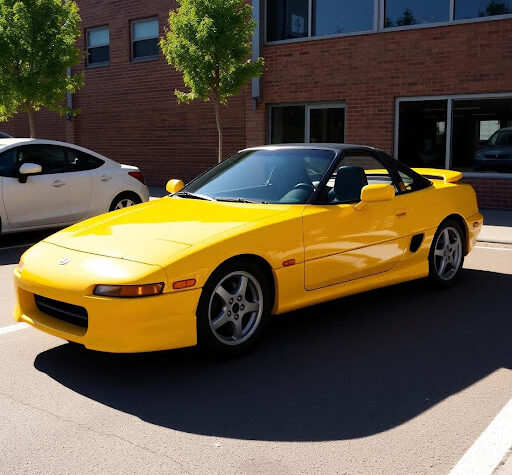
OmniVision Technologies, Inc., a leading developer of advanced digital imaging solutions, introduced two new image sensors, the OX1A10 and OX2A10, designed for side- and rear-view camera monitoring systems (CMS), respectively. Built on OmniVision’s 4.2-micron OmniBSI™ pixel architecture with split pixel technology for exceptional high dynamic range (HDR), the OX1A10 and OX2A10 sensors offer best-in-class low-light performance and represent the automotive industry’s leading LED flicker–reduction solution.
Replacing mirrors with CMS can improve drivers’ line of sight by eliminating blind spots, reducing glare and allowing full panoramic and parking views. Additionally, CMS help improve fuel efficiency by reducing air resistance caused by side mirrors. Because of these advantages, market research analysts expect CMS to replace rear- and side-view mirrors across a wide range of new vehicles by 2020. However, with increasing use of LED in street lighting and headlights, a phenomenon known as “LED flicker” is becoming an issue for display-based vision systems, causing a delay in widespread adoption.
“In regular HDR cameras, the short exposure time causes the image sensor to miss the LED ‘on’ pulse, giving the appearance of ‘flicker’ in the video stream on a display. Merely increasing the exposure time of normal pixel technology to capture the LED pulse does not solve the problem, but rather causes saturation and loss of dynamic range,” said Marius Evensen, product marketing manager at OmniVision. “We designed the OX1A10 and OX2A10 image sensors with LED flicker–reduction technology to specifically mitigate this problem and enable mass adoption of e-mirrors in the automotive market. These sensors join our growing portfolio of automotive specific digital imaging solutions targeted at both machine and vision display systems.”
The OX1A10 and OX2A10 achieve 110dB HDR while guaranteeing LED pulse capture, enabling excellent camera performance in all lighting conditions. This allows the automotive cameras to simultaneously capture bright and dark scenes, providing excellent image quality in the most demanding lighting situations. The OX1A10 supports 1280 × 1080 resolution in a 1:1.2 aspect ratio, making it ideally suited to side-view cameras. Targeting rear-view camera applications, the OX2A10 supports 1840 × 940 resolution in a 2:1 aspect ratio. The sensors’ on-chip combination algorithm reduces the output data rate for easier data transition and back-end processing.
The OX1A10 and OX2A10 are currently in volume production.
About OmniVision
OmniVision Technologies, Inc. is a leading developer of advanced digital imaging solutions. Its award-winning CMOS imaging technology enables superior image quality in many of today’s consumer and commercial applications, including mobile phones, notebooks, tablets and webcams, digital still and video cameras, security and surveillance, entertainment devices, automotive and medical imaging systems. Find out more at www.ovt.com



More Stories
Accelerating The Development of Hydrogen Vehicles & Infrastructure – Europe’s Biggest Players Meeting at Premier Event
Automotive IQ Announces the 15th Annual Automotive Functional Safety Week 2025
Major Automotive Companies to Share Latest Developments in Steering, Braking, Chassis and Suspension Systems at Premier Industry Event